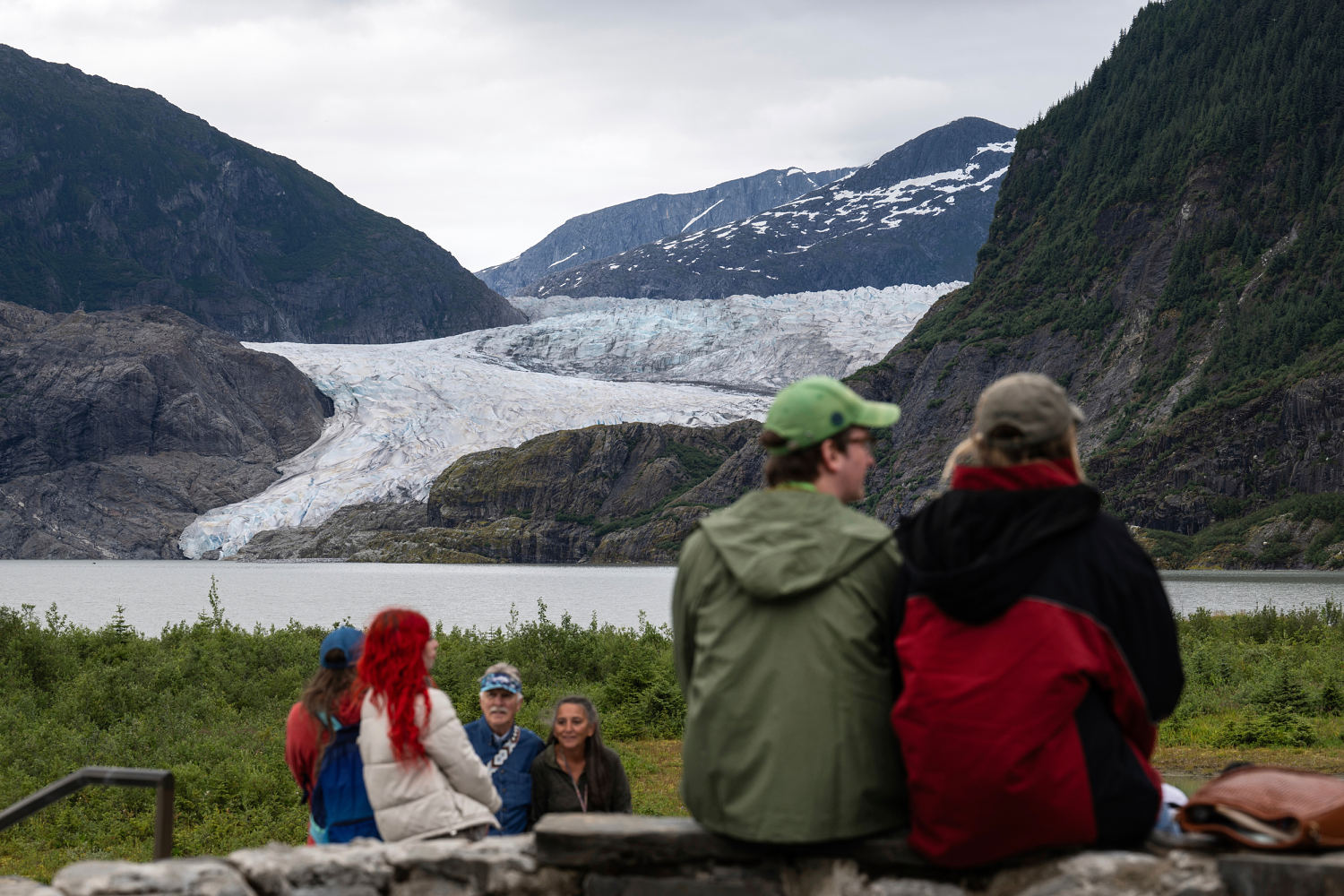
Glacial outburst flooding — caused when natural dams of ice or sediment collapse and send a rush of floodwater downstream — are also a problem in Europe, Central Asia and South America, where they have historically been more deadly.
Glacial outburst floods have killed more than 12,000 people worldwide, according to estimates in the journal Global and Planetary Change. Most of those deaths took place in two events — flooding in Huaraz, Peru, in 1941 and in Kedarnath, India, in 2013.
A study published in Nature Communications in 2023 found that 90 million people across 30 countries lived in areas with glacial lakes. Of those, the study estimated, about 15 million were exposed to potential impacts from outbursts, mostly in India, China and Pakistan.
Another 2023 study in Nature Communications identified at least 120 glacier-dammed lakes in Alaska. Of those lakes, 106 had drained since 1985. Most are in remote areas.
To mitigate risk this year, the city of Juneau lined up miles of barriers along the river, which kept water from seeping into many neighborhoods, even though floodwaters crested higher. The barriers were paid for in part by Juneau residents in the flood zone.
“We’re still evaluating the barriers, but we are confident they did help prevent property damage in comparison to the 2024 event,” said Nahaku McFadden, a public affairs chief for the U.S. Army Corps of Engineers, which assisted the city in designing the barrier system.
How do glacial outbursts happen?
Glaciers are slow-moving rivers of ice that inch down mountain slopes. In cold months, these bodies of ice accumulate mass as snowfall gets compacted. In summer, they shrink as meltwater drains away or if the glacier becomes unstable and sheds ice.
The water that drains from glaciers flows first into rivers and then eventually out to the sea.
But sometimes the flow of meltwater is blocked by a plug of glacial ice. As water accumulates, it tunnels below the glacier and can destabilize that plug of ice.
“Once you get a substantial amount of water behind that ice plug, eventually it can float that ice and get underneath it. And because that water is warmer, it starts a positive feedback cycle and thermally erodes the ice,” said Denny Capps, a geomorphologist who leads the national geohazards program at the National Park Service and has studied the phenomenon.
“Once triggered, they can go catastrophic and cause flooding several orders of magnitude beyond the greatest flood ever measured from rain and snowmelt,” he added.
In Alaska, glacial outburst floods are common in August because that’s when runoff typically peaks, but they’re possible any time of year.
Often, after water drains, the glacier’s slow march downhill collapses ice and plugs the system back up again, restarting the cycle. Capps said it’s common to have one outburst each year.
In Alaska, there are hundreds of glacier-rimmed lakes that could generate outburst floods, Capps said. But most of these are remote, minimizing implications for people or infrastructure downstream.
“In key places like Suicide Basin [upstream of Juneau], we actually do have associated infrastructure downstream, so that’s where you get the problem,” he said.
Glacial outburst floods are also possible if water overwhelms natural dams created by moraines, the rock and debris left behind as a glacier moves or retreats.
“Typically — not always — moraine-dammed lakes will have one failure and the sediment is washed away and it’s done,” Capps said.
What role is climate change playing here?
Glaciers are receding worldwide. Typically, some glaciers grow in seasons with abundant snowfall or cool weather, and others shrink in the sun or if there’s a snow drought. But overall, the world’s glaciers are on a long-term trend of decline.
The World Glacier Monitoring Service collects data from 60 “reference” glaciers that each have more than 30 years of mass balance measurements.
“The losses are large and consistent across the globe,” said Pelto, who measures the changes in glacier mass each year in Washington’s North Cascades range. “2023 was the first year where all 60 lost mass balance in the same year. That happened again in 2024.”
In Alaska, research suggests glacial outbursts have declined in volume since 1985, because glaciers are storing less water behind ice dams that are growing progressively shorter and thinner. The frequency of these events stayed about the same over time.
As glaciers recede, some areas prone to outburst floods might stop producing them.
“I think for Alaskans, the risk is going to be going down,” Pelto said. “As the glaciers are thinning and retreating, we’re going to have fewer opportunities for a robust ice dam to develop.”
However, researchers are concerned that glacial dams at higher altitude and in colder locations could become less stable as the world continues to warm, forming new lakes and areas at risk of outbursts.
On Wednesday in Juneau, the barriers erected after last year’s disaster largely held. The Startz family home had a little bit of ponding in the front yard and a small layer of glacial silt on the lawn.
Homeowners in the flood zone are paying more than $600 a year for that protection.
“If those barriers work, great! I don’t mind paying that extra,” Startz said Tuesday. “We can’t fix the glacier.”


